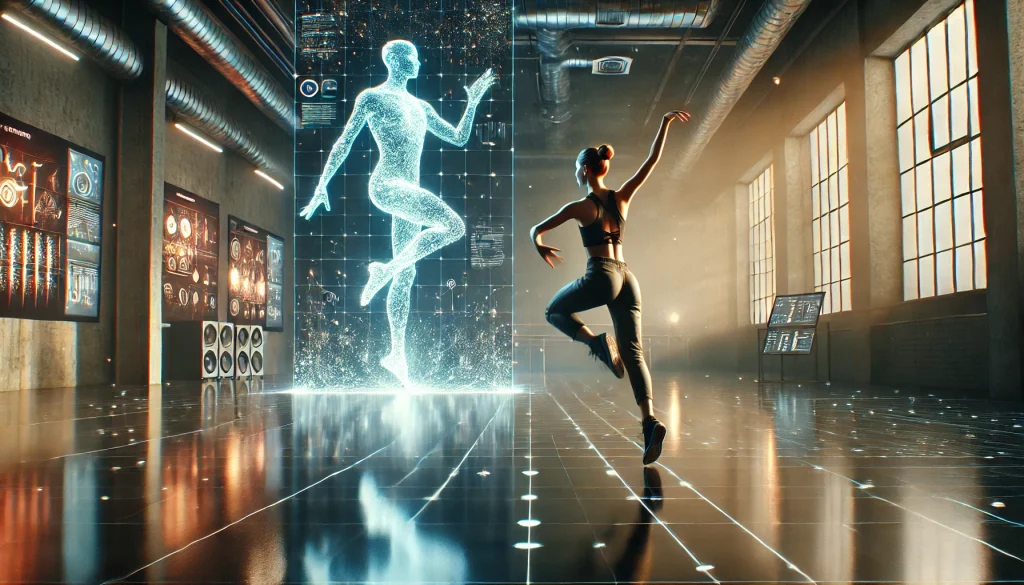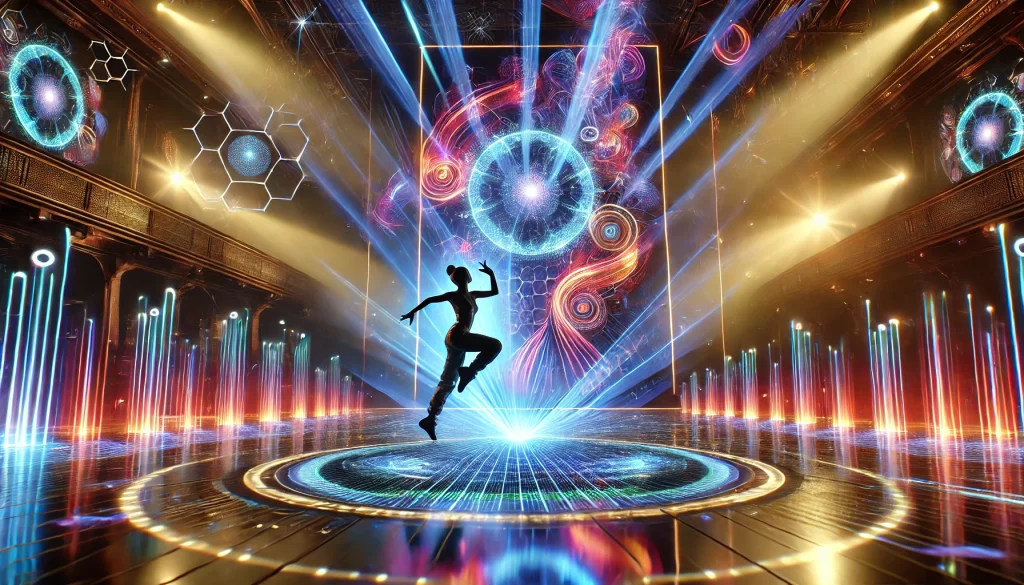How Are Dance Artists Using AI? Artificial intelligence (AI) has revolutionized many art forms, and dance is no exception. Dance artists worldwide are leveraging AI to enhance choreography, innovate performance styles, and explore new creative dimensions. This fusion of technology and dance showcases how AI can redefine traditional art forms while preserving their essence. Below is an exploration of how dance artists are utilizing AI across different aspects of their craft.
1. AI in Choreography Creation

One of the most significant impacts of AI in dance is its role in creating choreography.
- Choreographic Assistance: AI systems analyze music, movements, and styles to generate innovative dance sequences.
- Motion Analysis: AI programs study dancers’ movements to offer variations and improvements.
- Collaboration with Algorithms: Artists use AI as a co-creator, allowing machines to propose unexpected and creative movement patterns.
Example: The AI-powered choreographic tool, Choreographic Machine, helps dancers explore novel movement ideas.
2. Enhancing Performances with AI-Generated Visuals

AI adds a new dimension to live performances by incorporating digital visuals and effects.
- Projection Mapping: AI synchronizes movement with visuals, creating immersive stage environments.
- Interactive Performances: AI systems respond in real-time to dancers’ movements, altering visuals or music dynamically.
- Augmented Reality (AR): Dancers perform with virtual elements projected into the space, creating a blended reality experience.
Example: Wayne McGregor Studio collaborated with AI to produce performances where machine learning influenced the choreography and stage design.
3. AI and Dance Education
AI is transforming how dancers learn and train:
- Virtual Coaches: AI analyzes dancers’ movements, providing feedback on posture, alignment, and technique.
- Accessibility: Online AI-powered platforms offer personalized dance lessons to a global audience.
- Preservation of Dance Forms: AI helps document and replicate traditional dance styles for future generations.
Example: AI systems like Move AI enable dancers to refine their skills with detailed, real-time feedback.
4. Creative Exploration and Experimentation
AI empowers dancers to explore new creative territories.
- Unconventional Movements: AI generates movement patterns that may not occur naturally to human choreographers.
- Cross-Disciplinary Art: AI allows integration with music, visual arts, and storytelling, creating multidimensional performances.
- Improvisation Tools: AI can improvise with dancers, introducing spontaneity into performances.
Example: Artists like Alexander Whitley experiment with AI to discover unique choreography inspired by data and algorithms.
5. Audience Engagement and Immersive Experiences
Dance artists use AI to deepen audience connection and interaction:
- Personalized Experiences: AI tailors performances based on audience demographics or preferences.
- Real-Time Feedback: AI gathers and analyzes audience reactions, adapting the performance accordingly.
- Immersive Installations: AI-driven environments allow audiences to interact with dancers and visuals.
Example: Interactive dance performances, such as those at TED Talks, have incorporated AI to engage audiences more deeply.
Challenges and Ethical Considerations
While AI offers immense possibilities, it also presents challenges:
- Loss of Human Authenticity: Over-reliance on AI may dilute the emotional depth of dance.
- Accessibility Gap: Not all dancers or companies have the resources to integrate AI.
- Intellectual Property Issues: Determining authorship when AI is involved in choreography remains complex.
Conclusion
AI is a transformative force in dance, pushing the boundaries of creativity and innovation. By embracing this technology, dance artists are not only reimagining the art form but also making it more accessible and engaging for a global audience. As technology evolves, the relationship between AI and dance is likely to deepen, fostering a future where machines and humans collaborate seamlessly to create breathtaking performances.
If you’re a dance enthusiast, now is the time to explore how technology is redefining the art you love!
FAQ: How Are Dance Artists Using AI?
1. What is the role of AI in dance choreography?
AI assists choreographers by analyzing movements, generating new dance sequences, and acting as a co-creator to inspire innovative patterns. It helps dancers explore unconventional movements and adds variety to their work.
2. How does AI enhance live dance performances?
AI enhances performances by incorporating projection mapping, real-time interactive visuals, and augmented reality. These technologies synchronize with dancers’ movements, creating immersive and dynamic stage environments.
3. Can AI help dancers improve their skills?
Yes, AI-powered virtual coaches provide feedback on technique, posture, and alignment. These systems allow dancers to refine their movements and offer personalized training, making education more accessible.
4. How is AI used to preserve traditional dance forms?
AI documents and replicates traditional dances by analyzing and recording movements. This helps in preserving cultural heritage and ensures that traditional styles are passed down to future generations.
5. Are there any AI tools currently used in dance?
Yes, tools like Choreographic Machine and Move AI assist with choreography creation, motion analysis, and training. These systems are widely used by dance artists and educators for innovation and skill enhancement.
6. What are the benefits of AI for audiences in dance performances?
AI creates personalized and interactive experiences for audiences, such as real-time adaptations based on audience reactions and immersive installations that allow viewers to interact with the performance.
7. What challenges do dance artists face when using AI?
Challenges include potential loss of emotional authenticity, high costs of AI integration, and intellectual property concerns over the authorship of AI-generated choreography.
8. Can AI replace human choreographers and dancers?
AI is a tool that enhances creativity but cannot replicate the emotional depth, storytelling, and cultural nuances that human choreographers and dancers bring to performances.
9. How is AI shaping the future of dance?
AI is enabling cross-disciplinary collaborations, redefining how dance is performed and experienced, and fostering innovative approaches to choreography and audience engagement.
10. How can I see an AI-enhanced dance performance?
Many contemporary dance companies, such as Wayne McGregor Studio, are experimenting with AI in their performances. Look for modern dance festivals or online platforms featuring AI-integrated showcases to experience this fusion of art and technology.
Let us know if you have more questions about AI in dance!


